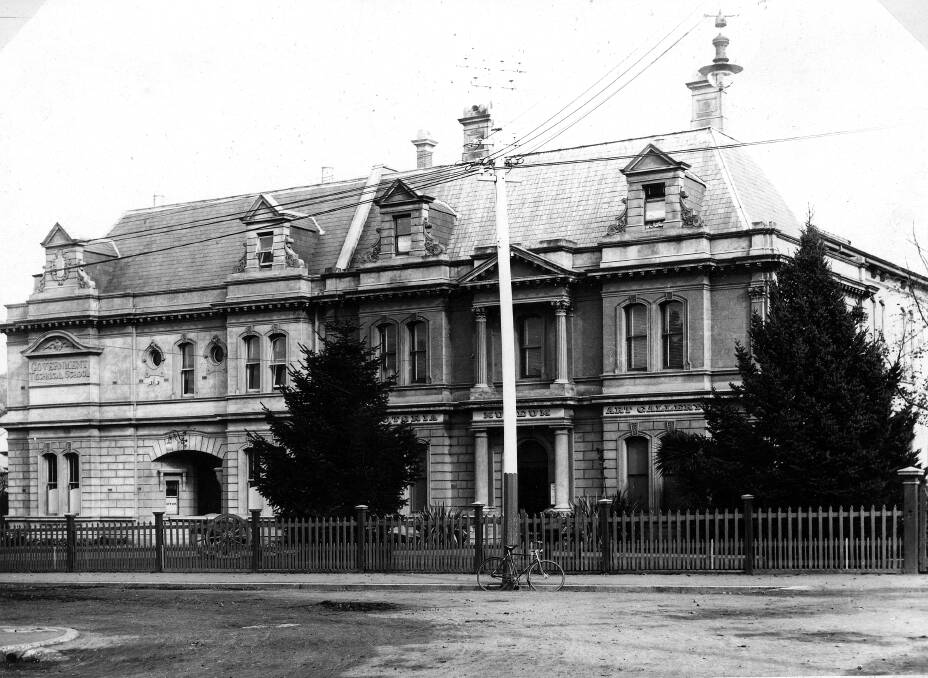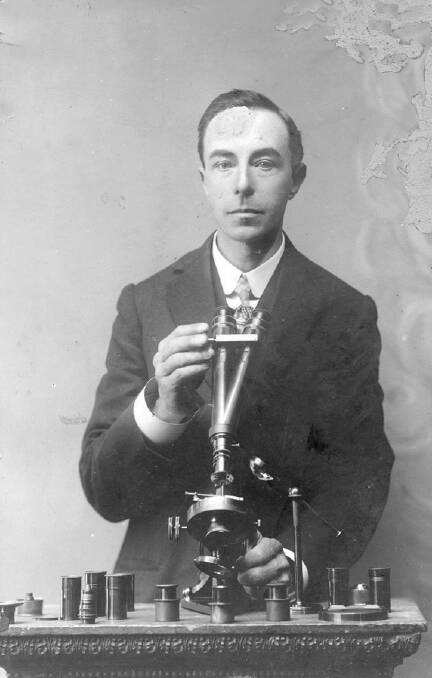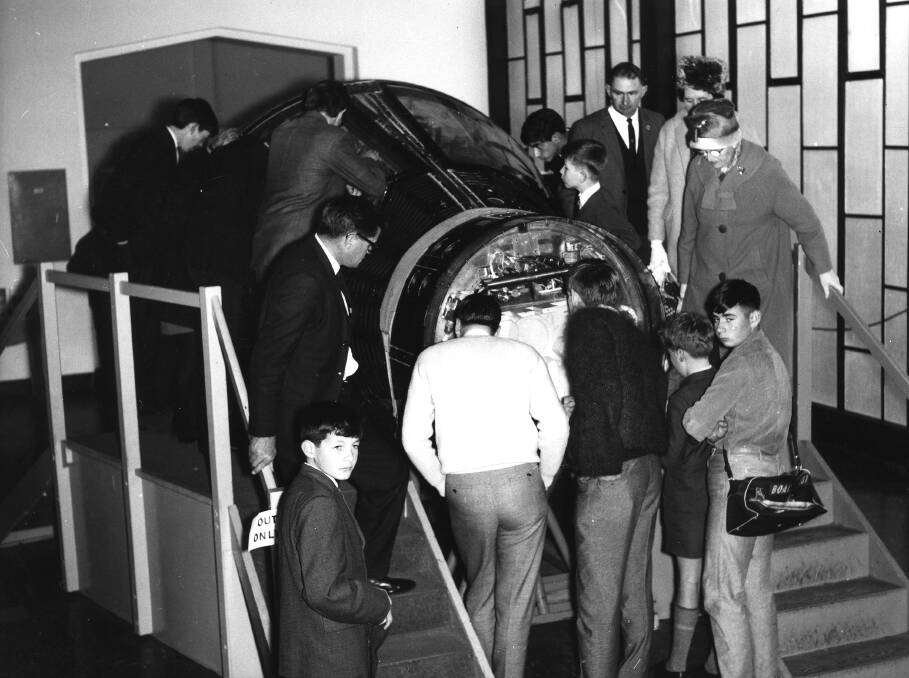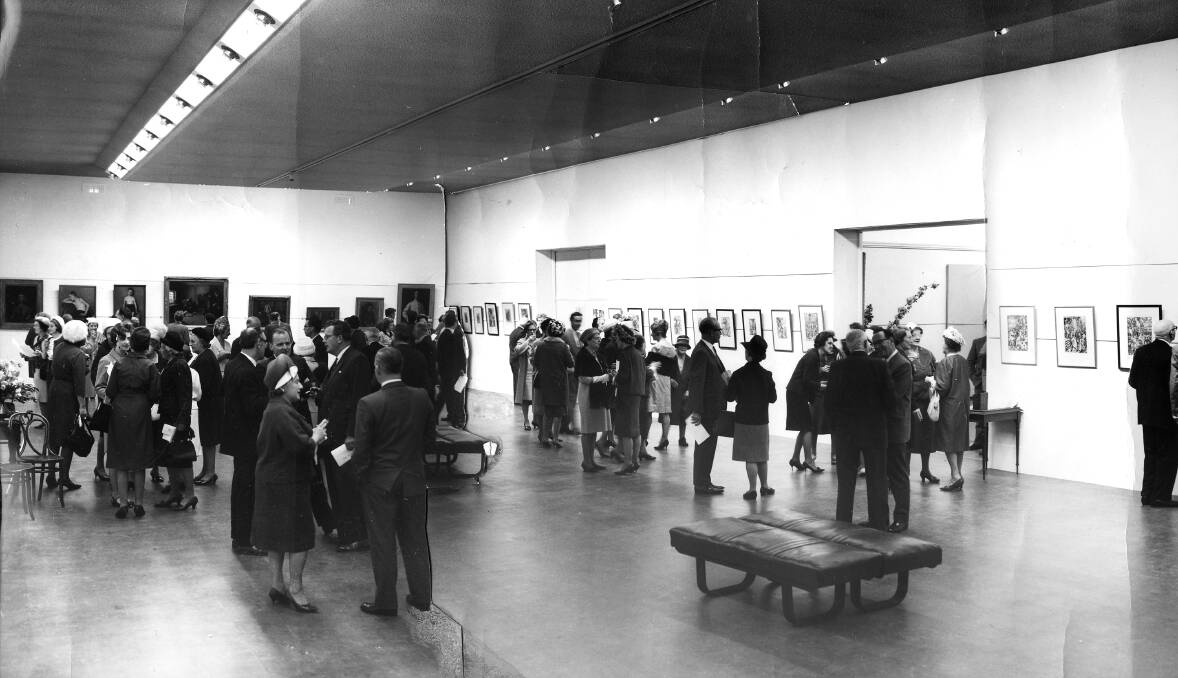
The Queen Victoria Museum and Art Gallery has been a constant in Launceston since its opening in 1891 at Royal Park. This year, the museum will turn 130 on April 29.
Subscribe now for unlimited access.
or signup to continue reading
To begin with the museum had a caretaker, but no curator. The first curator, Herbet Hedley Scott, was appointed to the role in 1897. Mr Scott's successor was his son Eric, a well-regarded scientist.
The beginnings of QVMAG came from collections sourced from the Royal Society of Tasmania and the Launceston Mechanics Institute. The early collections focused on mineral specimens and natural sciences on the ground floor, with art displayed on the upper level.
However, more space was needed. So, in 1907 the first extension was built to accommodate a zoological gallery. In 1927 the museum gained a significant additional collection when it purchased the John Watt Beattie collection. The lot included a trove of early colonial history and art, as well as an extensive convict-related collection. The museum continued to develop over the years, with more extensions and research and objects acquired.
In 1998, the museum extended further with a new site at the Launceston railway yards at Inveresk. The new site opened in 2001. Then, six years later, a decision was made to create a dedicated art gallery at the original Royal Park site, with the Inveresk site to focus more on natural sciences and history. The refurbished art gallery was opened as a space dedicated to the visual arts and design in 2011.

Experiences of QVMAG
City of Launceston's general manager of arts and cultural services Tracy Puklowski said the museum was made up of stories.
"It's a story about the history of Launceston. It's a story about how museums have changed over the years. It's a story about the personalities that have run the museum over the years," she said.
Ms Puklowski was appointed to her role as director of the museum in 2018 and was amazed by the size and scope of the institute. She said the challenge when she started was to hone in on what the museum should specialise in, narrowing the focus.
"What struck me was these incredible unique stories that we have here, and how much innovation there has been in Launceston over the years," she said.
Senior curator of visual arts and design Ashleigh Whatling said when she started at QVMAG in 2017, she saw the potential to mix things up and challenge some of the assumptions around the artworks.
"I thought there were opportunities for us to tell more rounded stories, getting different parts of the collection to speak to different eras."
Museum assistant of natural sciences Judy Rainbird started at the museum in January 1998. She applied because of the technical aspect and the opportunity to work with the collections the museum had.

Collection changes
There is no doubt QVMAG has changed substantially over the years, and not just with site builds and expansions. Collections have grown, staff have come and gone, and technology has helped bring the concept of the museum into the 21st century.
Ms Rainbird said the when she started she primarily assisted the curator at the time, and though the work had changed over the years, the collection curation requirement remained the same.
"I think the biggest change is that being a small museum we are now internationally known and have a reputation," she said. "It's just through digitalisation ... we are more exposed."
Ms Puklowski said QVMAG had become more aware of its audiences, who they were, and what they wanted.
"I think we have become a lot more confident in ourselves as an organisation," she said. "We are a bit more willing to experiment, take risks, push the boundaries. It's been a delightful evolution to be a part of."
Ms Whatling agreed with Ms Puklowski and said the museum had been able to tackle the social and political aspirations of northern Tasmania. She had also focused on acquiring a more diverse range of works from contemporary artists.
The meaning of QVMAG
City of Launceston deputy mayor Danny Gibson said QVMAG had long been central to the cultural fabric of the city.
"QVMAG is a central part of Launceston life. For 130 years the institution has been dedicated to sharing the stories of our people and places," he said. "I commend Tracy and her team on providing opportunities to engage with art, science, history, and space to the people of Launceston."
Ms Puklowski said the anniversary marked an important turning point for the institution.
"We are so proud to celebrate our 130 year anniversary with the people of Launceston," she said. "Museums are a reflection of the times. Our institution continues to transition and adapt through cultural change since 1891. In the future, we continue to look to reflect, grow and adapt."

The future
No one knows what the future will hold, but the women of QVMAG weighed in their opinions about what could be focused on in the years to come.
Ms Rainbird said she imagined the staff would increasingly find more stories to link to the objects in the collection due to all the access to resources they now had. She said the information would also fill in the gaps for items that had unknowns attached to them.
Ms Whatling said a greater range of diverse voices would be found, and more challenging stories would be brought to the forefront.
"Not just more diversity in our artists, but in the curators, in the leadership team, not just the voices that we are curating," she said. "The bottom line is, I feel like I'm part of a long chain of custodians of this collection and the chain will continue after me."
Ms Puklowski, even though she will soon be leaving her position at QVMAG, still had an idea of where the museum may head in the future. She believed it was important for the history of QVMAG that the governance and funding structure should head into the next phase of evolution.
"I think that QVAMG is in a really great position at the moment to take that next step into its future," she said. "I'm really sad to be leaving but I'm proud of what we have achieved."














